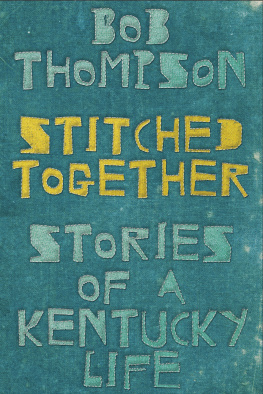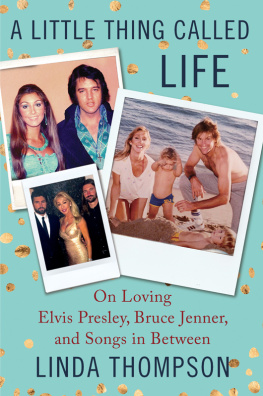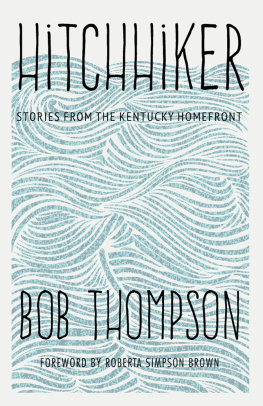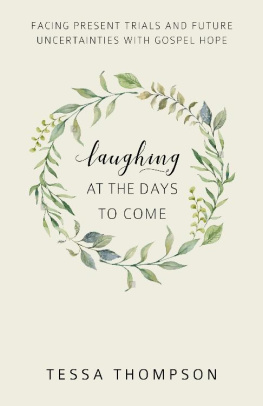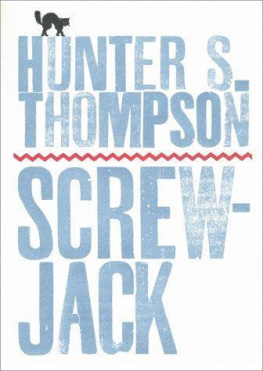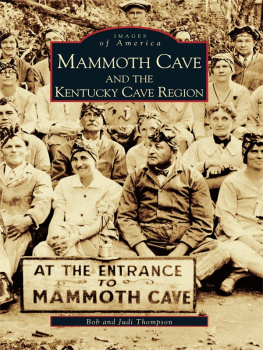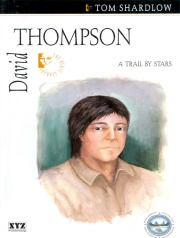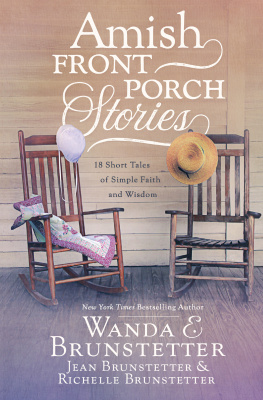
Stitched Together

Stitched Together

Stories of a Kentucky Life
Bob Thompson
Foreword by Lee Pennington

Due to variations in the technical specifications of different electronic reading devices, some elements of this ebook may not appear as they do in the print edition. Readers are encouraged to experiment with user settings for optimum results.
Copyright 2019 by The University Press of Kentucky
Scholarly publisher for the Commonwealth,
serving Bellarmine University, Berea College, Centre
College of Kentucky, Eastern Kentucky University,
The Filson Historical Society, Georgetown College,
Kentucky Historical Society, Kentucky State University,
Morehead State University, Murray State University,
Northern Kentucky University, Transylvania University,
University of Kentucky, University of Louisville,
and Western Kentucky University.
All rights reserved.
Editorial and Sales Offices: The University Press of Kentucky
663 South Limestone Street, Lexington, Kentucky 40508-4008
www.kentuckypress.com
Library of Congress Cataloging-in-Publication Data
Names: Thompson, Bob - author.
Title: Stitched together : stories of a Kentucky life / Bob Thompson.
Description: Lexington : University Press of Kentucky, 2019.
Identifiers: LCCN 2019022716 | ISBN 9780813178066 (hardcover) | ISBN 9780813178073 (pdf) | ISBN 9780813178080 (epub)
Subjects: LCSH: Thompson, BobChildhood and youthAnecdotes. | Thompson, BobFamilyAnecdotes. | KentuckySocial life and customsAnecdotes. | TalesKentucky.
Classification: LCC PS3620.H6527 A6 2019 | DDC 813/.6dc23
LC record available at https://lccn.loc.gov/2019022716
This book is printed on acid-free paper meeting
the requirements of the American National Standard
for Permanence in Paper for Printed Library Materials.

Manufactured in the United States of America.

| Member of the Association
of University Presses |
Contents
by Lee Pennington
Foreword
A Stitch in Timing
B ob Thompson is a storyteller, and I mean that in the highest and best sense of the word. Over the years I have had the privilege both to hear him and to read his stories. Not only does he do a great job both telling and writing stories, he also has the ability to incorporate elements of each genre into the other. Not an easy task. Hearing him tell is a bit like sitting in front of a fireplace reading a good story. Reading one of his stories reminds us we are not so far from that fireplace that we cannot hear his voice paint vivid pictures for us and give us a yarn of major significance.
In Stitched Together: Stories of a Kentucky Life, Bob uses his family and community background of growing up near Paducah, Kentucky, to bring together pieces of human fabric to make an incredible quilt. It is surely his quilt, but at the same time it is a universal quilt, belonging to all of us. The fabric is rich and soft and just thick enough to keep us warm on long winter nights.
I have noticed that by the time we reach the end of one of Bobs stories, the story is bigger, deeper, and richer than we ever dreamed or expected it would be. The story has wingsit flies into our minds to stick in our memory like the sound of some distant train whistle or like some familiar odor that jars our recall of a time and place and moment we had somehow forgotten, giving us joy.
Take Granny in his introduction to the book. She is, in many ways, the grandmother we all knowa sweet, gentle lady who is concerned with those close to her, of course, but she also prepares to assist those she will never meet or see. It is here we find a great lesson, learning the importance of spaces, blank places, and areas of no sound, which are just as significant as what we perceive as real, solid, and important.
This is what actors, writers, and storytellers call timing: the space between the line and punch line. Go too quickly and the point is lost. Go too slowly and not much gets punched. Bob Thompsons timing in his telling and in his writing is impeccable. You will see those important empty spaces in every single one of his stories.
I am reminded of something I heard about a little girl in kindergarten who was coloring in her coloring book. The teacher, looking over her shoulder, said, Why, Janie, thats wonderful! You havent gone outside the lines anywhere.
I know, said Janie. Theres nothing out there to color.
Bob does not color outside the lines. His stories are accurate. He colors whats there.
So get ready for something very special as you read these stories. Take them slowly and give their impact time to happen. Read each story and then think about it for a while. Every stitch counts; every space, empty or full, is important.
Lee Pennington
Introduction
L ifes treasures are a patchwork of stories with characters revealed in the pauses between stitches and words.
Granny sewed her lifes energy into stacks of quilts and Mom poured her love into volumes of diaries, scrapbooks, and photo albums. Their spirits speak from the cadence and rhythm between their offerings, leaving us to fill the spaces.
Mom
Moms diaries began in 1940, the year she became a teen and her family moved twenty miles, from Markham Avenue in Paducah, Kentucky, to the back room living quarters of a country grocery in Ragland, and the daily journaling didnt stop until she was in her eighties, when she started forgetting.
Her entries were usually limited to a few sparse sentences with a reporters neutral point of view, as in this note from February 5, 1943, describing her day and a sleepover with her best friend: Went to school, had a pep meeting, came home and went to a ball game at Tilghman. Robbie stayed all night with me.
She wrote about little things but seemed to neglect the big things, things that were obvious to her, but not so much to later readers. At the beginning of December 1949, she knew she was pregnant, but not once in the next nine months did she write that in her diary; in August I popped miraculously into the world and her diary, heralded only by vague clues.
She showed the same neglect in her large collection of neatly typed three-by-five-inch recipe cards. I was reminded of those omissions when recently my son surprised me with a birthday book titled Nannys Recipes. Each page was dedicated to a cherished dessert of his childhood and contained a different picture of Mom, a scan of one of her recipe cards, and a short reflection of its impact on his youth. I could have guessed the first recipe: it was his favorite, Banana Pudding, and was always on the table when we visited my parents in Paducah or in their car when they came to our home in Louisville. As I read his caption beneath her picture and looked at the 1940s recipe card, I busted out laughing; there was no doubt that this was the same stained recipe card Mom had used to make her first dessert as a married woman.
Next page
